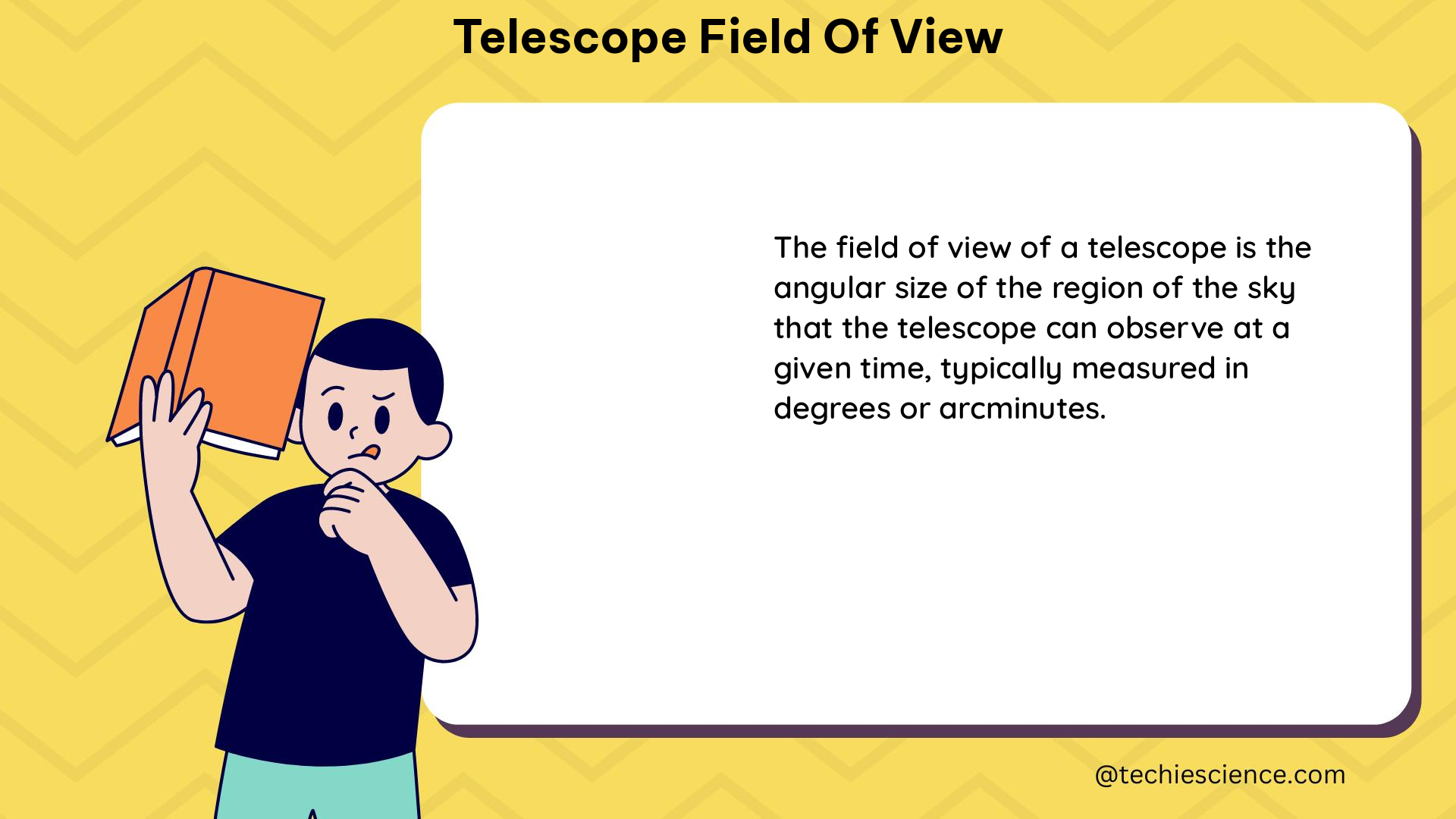Telescope field of view (FOV) is a crucial concept in astronomy, as it determines the amount of sky visible through the eyepiece. Understanding the relationship between the focal length of the telescope and the field stop of the eyepiece is essential for making informed decisions about the equipment needed for various astronomical observations.
Understanding Telescope Focal Length and Its Impact on Field of View
The focal length of a telescope is the distance between the objective lens (or mirror) and the focal point. This parameter plays a significant role in determining the field of view of the telescope.
Focal Length and Magnification
- The longer the focal length, the narrower the field of view and the higher the magnification.
- Shorter focal lengths result in wider fields of view and lower magnification.
This relationship can be expressed mathematically as:
Magnification = Focal Length of Telescope / Focal Length of Eyepiece
Calculating True Field of View (TFOV)
The true field of view (TFOV) of a telescope can be calculated using the following formula:
TFOV = 57.3 degrees/radian × (Field Stop / Focal Length of Telescope)
Where:
– TFOV is the true field of view in degrees
– 57.3 degrees/radian is the conversion factor from radians to degrees
– Field Stop is the maximum diameter of the circle of light that can pass through the eyepiece, usually measured in millimeters (mm)
– Focal Length of Telescope is the distance between the objective lens (or mirror) and the focal point, usually measured in millimeters (mm)
Understanding Eyepiece Field Stop and Its Impact on Field of View

The field stop of the eyepiece is a physical limitation that determines the maximum diameter of the circle of light that can pass through the eyepiece. It is usually located at the focal plane of the eyepiece and can be observed as a ring when looking down the barrel of many eyepieces.
Maximum Field Stop Diameter
The maximum possible field stop diameter depends on the size of the focuser on the telescope:
- For a 1.25-inch focuser, the maximum field stop diameter is approximately 27.5 mm.
- For a 2-inch focuser, the maximum field stop diameter is approximately 46 mm.
Calculating Maximum TFOV
Using the formula for TFOV, we can calculate the maximum possible TFOV for different telescope and focuser configurations:
- Telescope with 750 mm focal length and 1.25-inch focuser:
-
TFOV max = 57.3 deg/rad × 27.5 mm / 750 mm = 2.1 degrees
-
Telescope with 750 mm focal length and 2-inch focuser:
- TFOV max = 57.3 deg/rad × 46 mm / 750 mm = 3.5 degrees
These calculations demonstrate the advantage of using 2-inch eyepieces and 2-inch focusers in providing a wider field of view.
Factors Affecting Telescope Field of View
In addition to the focal length of the telescope and the field stop of the eyepiece, there are other factors that can influence the field of view:
Telescope Aperture
- Larger telescope apertures generally provide a narrower field of view, as the light-gathering power of the telescope increases with the square of the aperture.
- Smaller aperture telescopes tend to have a wider field of view, but they also have lower light-gathering power and resolution.
Eyepiece Design
- The design of the eyepiece, such as the number of lens elements and their arrangement, can affect the field of view.
- Some eyepiece designs, like wide-angle or ultra-wide-angle eyepieces, are specifically designed to provide a larger field of view.
Observing Conditions
- Environmental factors, such as atmospheric turbulence and light pollution, can also impact the perceived field of view.
- Observing from a location with good seeing conditions and low light pollution can enhance the apparent field of view.
Practical Applications of Telescope Field of View
Understanding the field of view of a telescope is crucial for various astronomical observations and tasks:
Locating and Tracking Celestial Objects
- A wider field of view can make it easier to locate and track celestial objects, especially when observing large or diffuse objects like nebulae or galaxies.
- Narrower fields of view are better suited for detailed observations of smaller, high-magnification targets like planets or binary stars.
Astrophotography
- The field of view is an essential consideration in astrophotography, as it determines the amount of sky that can be captured in a single image.
- Wider fields of view are often preferred for wide-field astrophotography, while narrower fields of view are better suited for high-resolution imaging of specific targets.
Observing Extended Objects
- When observing extended objects like star clusters, nebulae, or galaxies, a wider field of view can be advantageous to capture the full extent of the object.
- Narrower fields of view may require multiple observations or “panning” to cover the entire object.
Conclusion
In summary, the field of view of a telescope is a critical factor in determining the amount of sky visible through the eyepiece. By understanding the relationship between the focal length of the telescope and the field stop of the eyepiece, as well as other factors that can influence the field of view, astronomers can make informed decisions about the equipment they need for their observations and tasks.
Reference:
- How to work out maximum telescope field of view
- What is a Field of View in Astronomy and Why is it Useful?
- Field of View Calculator

The lambdageeks.com Core SME Team is a group of experienced subject matter experts from diverse scientific and technical fields including Physics, Chemistry, Technology,Electronics & Electrical Engineering, Automotive, Mechanical Engineering. Our team collaborates to create high-quality, well-researched articles on a wide range of science and technology topics for the lambdageeks.com website.
All Our Senior SME are having more than 7 Years of experience in the respective fields . They are either Working Industry Professionals or assocaited With different Universities. Refer Our Authors Page to get to know About our Core SMEs.